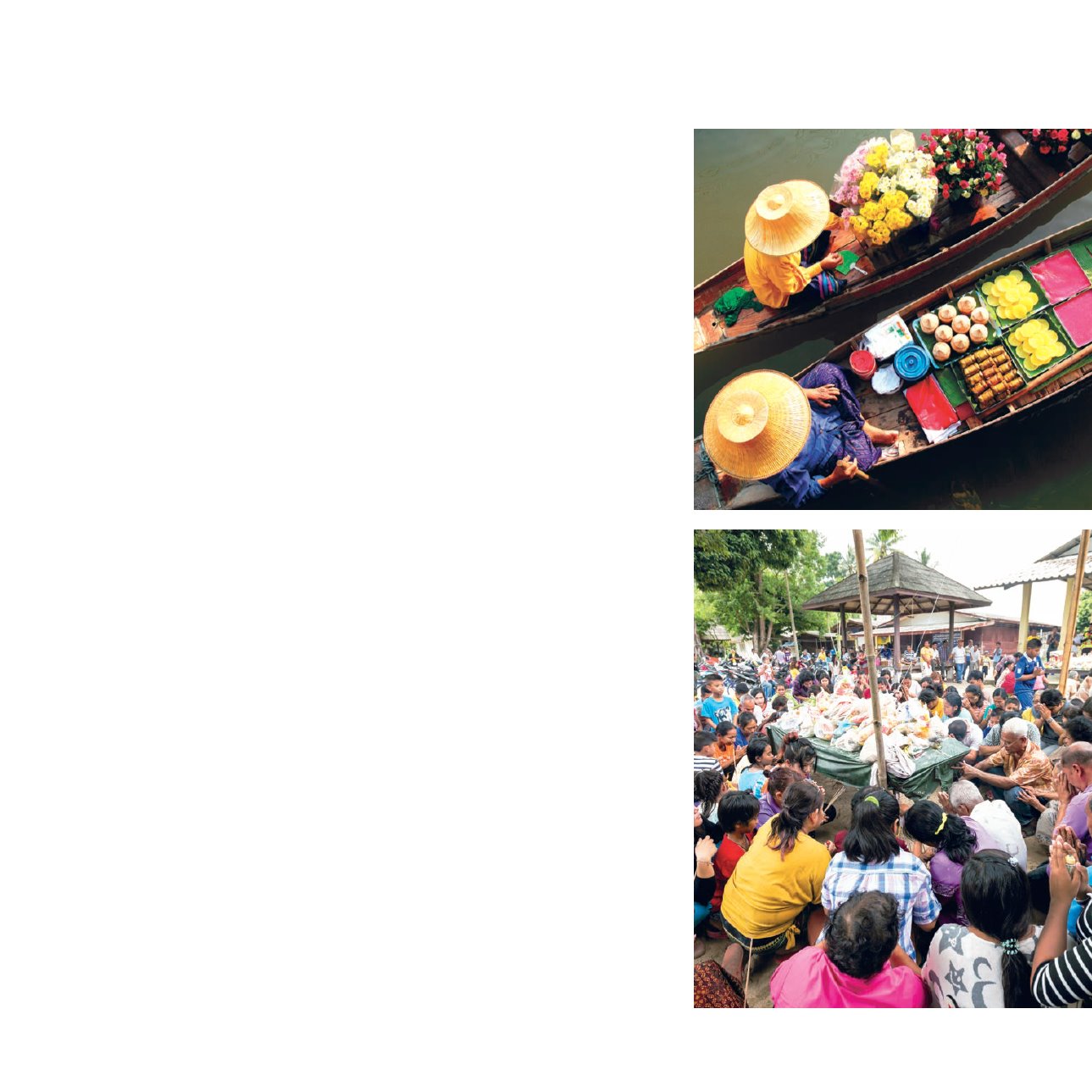

Prologue
|
23
Central Region of Thailand.
The ways of life of people in the Central region
is related closely to water. Most houses are in the height of the floodplain to prevent
floods in the wet season and use the boat as a vehicle for convenient transportation.
This region is the country’s major rice plantation area. The Central Thais have a way
of life that is associated with farming societies, especially rice farming. There are still
rituals that reflect the beliefs in rice society, such as the worship of the mother and
the farmer. People in the Central region eat rice as the main food. And with its rich
terrain, it is rich in so many fish. The main food that is available in almost every meal of
the Central people is
“Chilli”
such as shrimp paste chilli sauce (Namprik Kapi), sweet
chilli paste (Namprik Long-rua), and grilled-fish chilli paste (Namprik Pla Yang). There
are also many vegetables enabling possibilities to create various kinds of dishes, tastily
and beautifully both on main dishes and sweets.
In addition to being an important food source, the Central region is a main region
collecting both Thai culture and arts of the royal court and villagers, as evident in the
performances of Khon, Li-kae, Lam Tat, folk song for rice cultivation, E-saew, Choi,
as well as craftwork which is considered an archetype of Thai arts. The people in this
region are still attached to religion, as evidence in their traditions and beliefs, such
as the tradition of food offerings at
the end of Buddhist Lent Day, flowers offerings
and Rub-Bua (lotus acceptance) tradition. Although the lifestyle of the people in the
Central region is changing along with the influx of civilization, the traditional ways of life
is preserved in many parts of Central Thailand.
Southern Region of Thailand.
Culture and ways of life of the people in the
Southern region is diverse based on their religious beliefs, both in Buddhism and
Islamism. Ethnic groups are living together whether they are Thai-Buddhist, Thai-Muslim,
Chinese, or Chinese-Malay (Nyonya). Their costumes are different according to the
uniqueness of their identity. They also respect and express their gratitude to our
ancestors through the end of the tenth lunar month (Sart Duan Sib) tradition. There
are also important traditions and festivals like Pulling the Buddha (Chak Phra) tradition,
sacred cloth parade (Hae Pha Khuen That) festival, boat racing festival, vegetarian
festival, and Hari Raya day. In addition, the Southern region is a rich array of culturally
diverse performing arts and indigenous games that are bustling with excitement, such
as the shadow play, Manohra dance, Dike Hulu, Rongngeng dance and Zebra Dove
competition. Their food is also unique in light of strong spicy taste, such as spicy and
sour soup (Kaeng Lueng), spicy rice salad with mixed vegetable (Khao Yum), fish soup
with fermented fish’s kidney (Gaeng Tai Pla), fried Parkia (Pad Sator). They make their
living by rubber plantations, palm plantations, fishery and plantations of some fruits
such as rambutan, durian, mangosteen and Southern langsat.
Ethnic differences, beliefs, religions and culture in each area of the South add
charm to its lifestyle. It is full of integrated diversity and cultural strengths that create
the identity of people in this region.


















